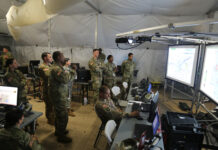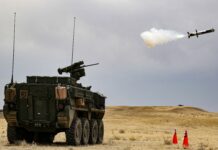Body armour and related carry systems must be capable of withstanding any ballistic danger, constructed of the appropriate materials, and tested to the highest standards.
When it comes to facing real-world, operational threats such as the Russian-made Dragunov semi-automatic sniper rifle on the battlefields of Ukraine, wearing effective body armour is essential for survival. While the war in Ukraine has taken a dreadful toll, allied states have supplied a vast amount of body armour and the country’s industry and Ministry of Defence have also been hard at work creating their own, domestic body armour options.
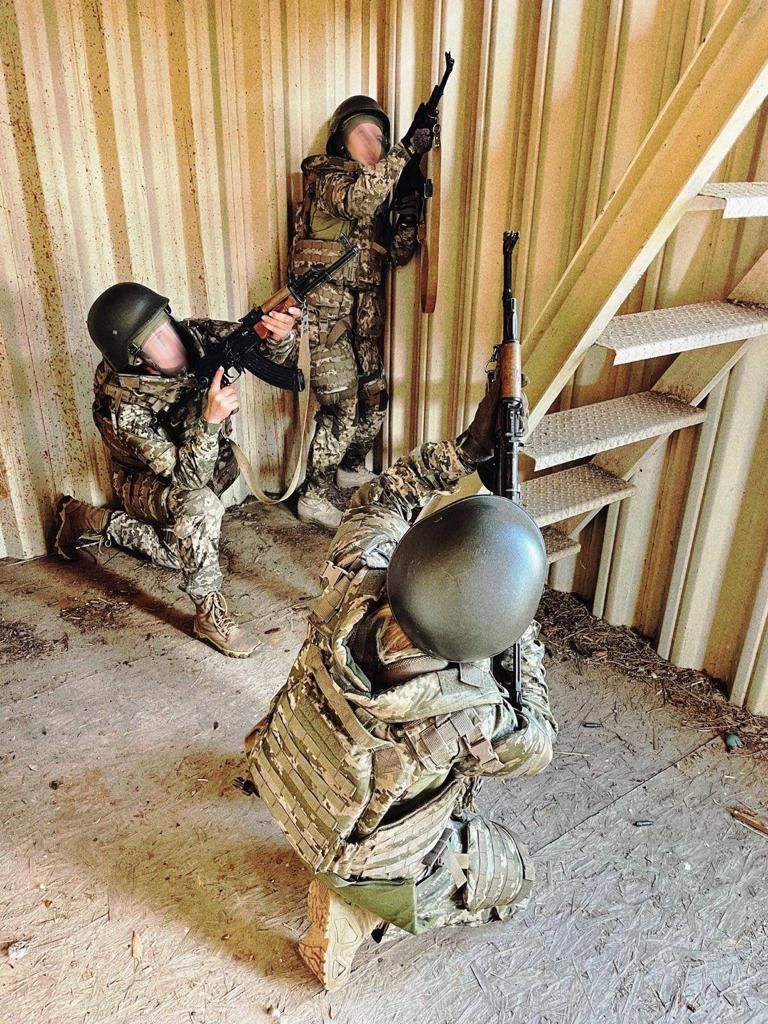
Credit: Ukrainian MoD
This article examines how body armour is supplied, developed and used to make a difference in Ukraine’s fight against Russian forces, along with some latest expert thoughts and views, and presents a brief update on US National Institute of Justice (NIJ) standards influencing the sector.
Establishing body armour supplies
While Ukraine largely relied on COTS body armour and protective systems, (even after the 2014 annexation of Crimea), back in mid-January 2021, the then Defence Minister, Andrii Taran, announced the development of the country’s own advanced body armour, designed with a modular system, that met NATO and accepted military standards. Until then, the country’s commercial systems offered disparate protection levels. However, the new system adhered to US NIJ Standard-0101.06, which represented, a degree of progress. The minister said at the time that the new “general military body armour designed for daily combat missions” was to be used mainly by the land forces, with a lightweight model to be developed for the likes of paratroopers. It is worth noting that just one year later, the new capability would be facing the reality of front-line action against the invading Russian forces, and thus some very serious ballistic threats.
Since the start of the war, hundreds of thousands of body armour sets have been supplied to Ukraine by Western Allies including Austria, Belgium, Canada, Croatia, Denmark, Estonia, Finland, France, Germany, Ireland, Israel, Italy, Latvia, Montenegro, The Netherlands, Norway, Portugal, Romania, Sweden, the UK, and the USA (with over 100,000 sets sent), with other supplies also from the EU. Private entities, too, have supplied body armour, such as the Ukrainian American Coordinating Council, which obtained a special licence to ship regulated, military-grade helmets and body armour to the country in bulk quantities in 2022.
Closer to home, as of October 2022, Ukrainian-owned international steel and mining group, Metinvest, had supplied 150,000 sets of body armour – according to the company – using the company’s own steel, accounting for one tenth of the body armour/vest sets in use by Ukrainian Forces at that time. The initiative has been referred to as ‘Steel Front’.

Credit: Metinvest
Rinat Akhmetov, shareholder of Metinvest Group, stated that the urgent need for large quantities of body armour by the Armed Forces of Ukraine at the start of the invasion led the company to become “one of the largest suppliers of special steel and protective gear”, although it had to “find an alternative to Azovstal’s armoured steel and bring in rolled steel from abroad” if it was to set up domestic production of body armour. By the spring of 2022, some 600 tonnes of steel had already been imported from Europe and Turkey, which was then transferred to armour producers, including its own group specialists, which then made armoured steel on existing production lines, with 20 tonnes of special steel being produced weekly by October 2022. The group said it had also been procuring “ready-made body armour”.
The company added that, “the greatest burden on manufacturers and suppliers of body armour vests” were in the early months of the war, from March to May 2022, and that “collaborations such as the partnership between Metinvest-SMC and the Lviv Defence Cluster (LDC) helped to steer them out of a difficult situation, with the LDC having received more than 500 tonnes of steel plates from Metinvest-SMC during that period, free of charge, for the production of body armour vests”; these sets went to equip the National Guard, the Territorial Defence and numerous units of the Armed Forces of Ukraine.
In terms of UK support, in October 2022, British company NP Aerospace announced that it had “manufactured and delivered more than 20,000 sets” of body armour plates and carrier vests to Ukrainian military personnel during the previous three months “on behalf of NATO governments”. It added that the initial 20,000 units were just part of “contracts totalling 62,000 sets of armour, (124,000 plates), due to be delivered weekly” over the following nine months until mid-summer 2023. NP Aerospace said that the first 6,350 sets of body armour plates and carrier vests had been made and delivered within 10 weeks from the start of the conflict, which had only been possible by ramping up production with the recruitment of 90 additional factory operators, working 24/7 shifts. James Kempston, CEO and owner of NP Aerospace, said at the time that the company was “working around the clock” to deliver protection to Ukraine’s front-line soldiers.

Ukraine has received vast supplies of body armour from overseas and has had it troops train in various European countries.
Credit: Crown Copyright
Looking after Ukrainian women on the front line
Back in Ukraine, reports in the Ukrainian media mid-September 2023, detailed the demo of new body armour for women, which had been designed and produced by company ‘Ukrainian Armor’, following a request from the country’s MoD, after ‘feedback’ from female combatants who had been coping with ill-fitting male armour systems. Rather than flat plates typical of male armour, which had been chafing the women soldiers, the new tailored, curved plates were reported in the press to distribute weight more evenly and comfortably over the body, and were also lighter than a standard male vest making the systems easier to put on and take off. The new kit also includes detachable torso, neck, groin and leg protection elements. In addition, whereas the male body armour relies of heavy metal plates, the lighter weight of the women’s plates is due to the use of composite ceramic-polyethylene.
The reports added that the manufacturer said the vest and carry system itself were also armoured, to an extent, providing soft ballistic defence and Category 2 protection against shrapnel, even without a plate inserted. According to a report, it is also some 20% lighter than other Cat 2 protection systems. With the appropriate plates, however, the report noted that ballistic protection to Category 4 or 6 provides the wearer with protection against small arms fire. A company spokesperson told the media that the system had passed internal tests at the time of the mid-September demo and would be handed over to the MoD for its evaluation, after which reports said “negotiations will take place”.
Not even a full month later, the MoD announced that it was testing two models of modular body armour and vests, including “structurally-curved plates” with women combatants from a unit of the armed forces. As with earlier media reports, the MoD said, “The new design takes into account the specifics of female body structure and shape.” It said personal protective equipment was being tested during combat training drills to make the test conditions for the new armour “as realistic and as close to real combat environment as possible”.
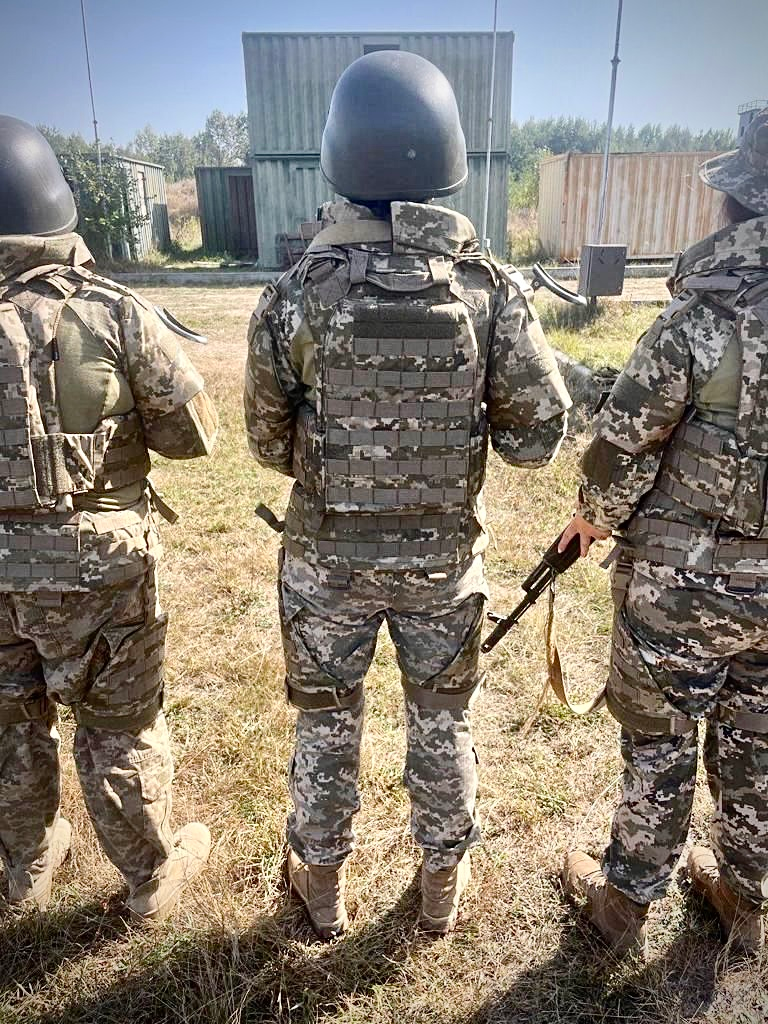
Credit: Ukrainian MoD
The MoD statement said that the Central Department of Development and Material Support of the Armed Forces of Ukraine was conducting this second round of “usage tests” having already received feedback from first-round tests, adding that, “The manufacturers perceived the comments and took into account the anthropometric data of women, so that it is convenient for military servicewomen to operate with weapons.” The statement said that after the completion of field tests, laboratory tests will be conducted by the maker, as well as the body armour being tested under different climatic conditions; based on the results, “the Ministry of Defence will approve the reference samples and then the body armours will be considered accepted for provision in the Armed Forces of Ukraine”. After that, the MoD said that the next step would be procurement.
Old threat, new threat, qualified comment
Mention was previously made of the Russian-made Dragunov semi-automatic sniper rifle being a key threat to Ukrainian forces and their body armour. This is to provide an idea of what the armour systems being discussed face in terms of sniper weapons of choice, and to what standards they must be tested if plates are to cope with the impact from such weapons. However, while the Dragunov still poses a major threat, the Ukrainian-made Z-10, (also designated UAR-10), which entered service with the Ukrainian military in 2018 when it actually replaced Ukraine’s Dragunov inventory, has emerged as a sniper weapon of choice in that theatre, with captured rifles even reported to be preferred by Russian forces, who are still equipped with the older Dragunov as their standard sniper rifle. The Z-10 is made by Zbroyar and fires standard NATO 7.62 × 51 mm rounds, weighs some 5 kg and is also said, by Ukrainian snipers using it effectively, to have an effective range of 1,200 m, compared to the Dragunov’s 800 m.
Commenting on this development, Steve Heaword, a body armour expert, and member of the UK MoD’s Jungle Warfare Programme, as well as Technical Director at specialist equipment maker Crib Gogh, told ESD that the Dragunov semi-automatic sniper rifle and its various 7.62 × 54 mmR rounds has posed a major threat for militaries in the past. It has been included as a threat under various MIL-STDs and test specs for the testing of body armour, including the NIJ standards to which many Western and NATO manufacturers adhere.
Heaword said, “Whereas the earlier NIJ 0101.06 standard certification was used by many, including some European forces, to qualify their body armour, this certification will be inadequate for plates and armour systems being used today in Ukraine and facing such serious threats of not only the older Dragunov, but also the lethal Z-10. Sure, it’s better to have body armour than no body armour, but when it comes to a level 4 plated body armour system certified by the previous NIJ 0101.06 standard, this will be unable to stop three rounds at point blank range, which a plate must be able to do in such scenarios facing such weapons. So, the latest NIJ revisions to NIJ 0101.07 standard are welcome for industry and militaries alike, as we’ll start seeing systems to those specs in the not-too-distant future.”
As for Crib Gogh, Heaword said the company will be following these standards, although it is aware that “the NIJ standard is used mostly for law enforcement and a lot of militaries will set their own threat level and threshold of what they deem fit for combat”. He added that, “As more threats emerge globally and the dynamic of those threats seem to evolve almost monthly, a fixed standard may not be the way forward. Many countries are looking at small, highly mobile and efficient units that are fast in and out, doing as much shock and awe as possible, and they will want, or need, tailored solutions and not necessarily a fixed standard.”
Crib Gogh’s VAULT (vertical assault user light tactical) system, for example, is one such system and, according to Heaword, “meets all of the vertical assault and safety-at-height needs of the military, and would be used in CQC [close-quarters combat] and at height breaching, so the plate dynamics would be for AK-47 amour piercing (AP) rounds and not Dragunov”.
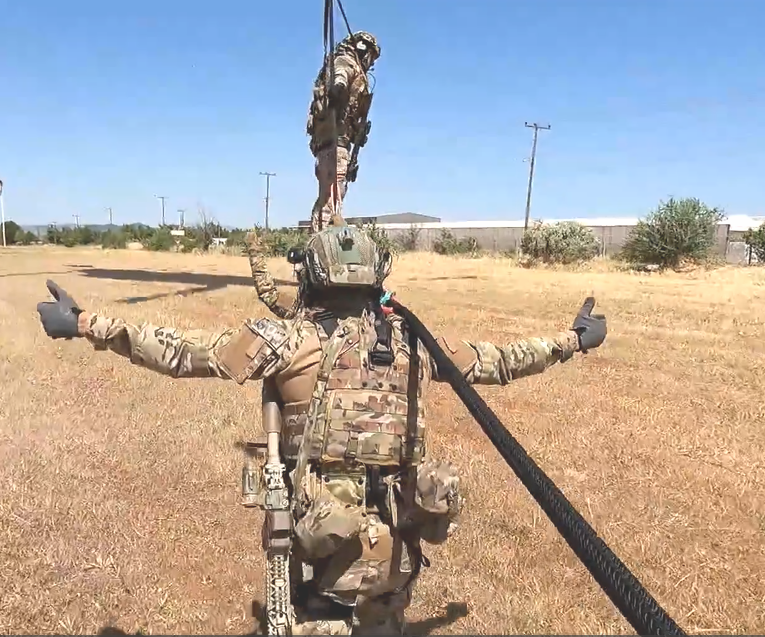
Credit: Crib Gogh
The company is also leading the way in the provision of new buoyant plates suited for the maritime interdiction role, changing the dynamic of fighting in water, or when encountering vessels at sea. “The ability to have confidence in the plate in the water is key”, said Heaword, “because if you’re unlucky enough to be in the water with someone on a container ship shooting at you, doffing your armour to stay afloat is not an option”. He added that the company had worked with Point Blank International in the US to make sure it had achieved protection against AK-47 AP rounds, physically floats and allows articulation and fighting in the water. “We are not alone in this domain, as others are looking at it and playing catch-up, but as the threat evolves, so must the operational capability evolve along with the protection. Sadly, it’s an insidious circle.”
Final word – NIJ standard latest
Regarding the revision of the NIJ 0101.06 to the revised NIJ 0101.07 standard, the latest news on NIJ 0101.07 timelines is that having progressed through a period with the NIJ 0101.06 standard still in play, but with NIJ 0101.07 published, from early 2024, NIJ 0101.07 will be the standard by which all new armour will be tested by the NIJ’s Compliance Test Programme, as well as newly accredited third-party ballistic test labs. That means the first NIJ 0101.07-certified body armour is expected to appear on the market later in 2024, and certainly by spring 2025, although the NIJ 0101.06-compliant product list will remain effective through 2027 and, possibly, beyond.
Finally, it is worth noting that the NIJ is also releasing a companion document, the new ‘Specification for NIJ Ballistic Protection Levels and Associated Test Threats, NIJ Standard 0123.00’, which provides a more detailed list than previously of ballistic threats common in the US.
The NIJ standard is important, because while many countries have their own standards and benchmarks for the production capabilities of body armour, NIJ standards are the yardstick most widely used and adhered to by leading manufacturers in ballistic protection systems, as well as being expected by leading security and military forces, including NATO.
Tim Guest








